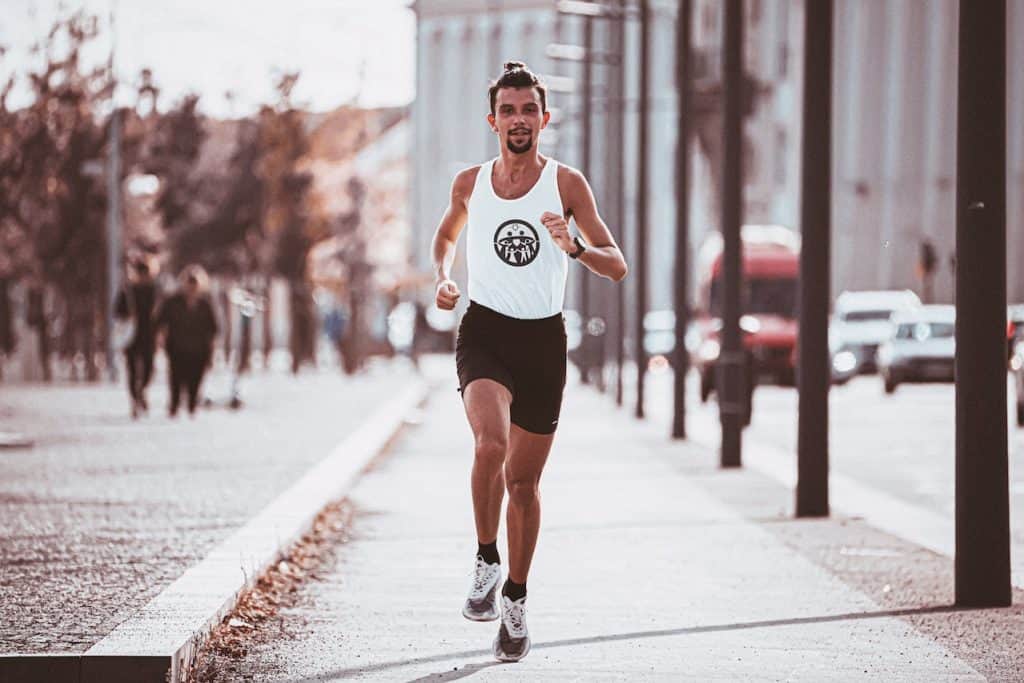Geschatte leestijd: 3 minutenWhen you want to start running, it is advisable to do this with caution and a well-thought-out plan. This is very important if you have never run before or if you have been out of running for a while. In this article “Running for Beginners” we provide some tips that you can use as a guide to start the first kilometers correctly.
RUNNING FOR BEGINNERS
Starting to run requires thoughtful and consciously built-up. One of the most important things is that you enjoy running and that you feel comfortable and relaxed while running. A forced start often leads to injuries, which you want to avoid. Also, try to be patient, and if you want to lose weight by running, remember that the kilos didn’t come on in 1 week, so they won’t go away in 1 week either.
COMMON BEGINNER MISTAKES
Often the origin and compulsion to exercise stem from physical frustration. Your pants no longer fit, your belt needs another hole, or you’re growing out of other clothing. It’s a harsh reality, and you want to make up for it quickly, so: running. Low-threshold, can be done anywhere, and burns a lot of calories. All of this is true, but don’t forget that you’re starting from far. Common beginner mistakes include:
- Running with the wrong shoes
- Starting too hard
- Not resting enough
Wrong shoes
One of the most important things when doing long-lasting running sessions is your shoes. Your knees and joints absorb all the impacts every time your foot lands after taking a step. These impacts need to be cushioned as much as possible, and good footwear is therefore extremely important. If you don’t start running with the right shoes, you may experience pain in your ankles and knees. Get good advice and don’t stubbornly run on random sports shoes. Take a video and see how your feet land and in what ways you may need to be corrected through shoes.
Starting too hard
Your frustrations can be a good motivator to get off the couch, but realize that this is something new for your body. Do you know how fast you’re running? And at what pace and intensity? How is your heart rate? And how many kilometers are you going to run? A common phenomenon is that beginners start too hard and quickly get out of breath. They blame themselves for this and admit that they don’t have a good condition or that they are not made for running. If you start carefully and slowly, in terms of intensity and distance, it will be easier to keep up, and you will notice that the kilometers will become easier for you step by step, and you will gradually build up a better condition.
Insufficient rest
Ok, you’ve finished the first session. Tomorrow again? Maybe that’s not such a smart idea. After all, your body needs rest to recover. Especially when you haven’t done anything for a while and you’ve done the first kilometers. Don’t think this will be easy because often you’ll notice that the stiffness increases after the first training, often within 48 hours. So running at that point isn’t very smart, as the body is recovering. Therefore, take at least 48 hours of rest and eat well to promote recovery.
RUNNING TIPS FOR BEGINNERS
So you’re not going to make the most common mistakes. But how should you start then? Below are some tips. You’ll also find more articles on this site about running, including a schedule for beginners. Read them carefully and decide how you’re going to start:
- Listen to your body. As mentioned, don’t start too hard and give your body time to recover. When you’re running and you feel a sharp pain or an increasing dull pain, stop running. This is not uncommon since your body needs to adjust to the new intensity, but if the pain lasts longer than 2 days, you should have it checked by a physiotherapist.
- Build up slowly. This has also been mentioned earlier, but the joints and muscles need to adapt to the impact that running brings. By the way, your condition will improve very quickly, and you will also notice this in other daily activities such as climbing stairs.
- Buy good running shoes. Again, we’re not telling you anything new. It can’t be emphasized enough how important running shoes are. These absorb the impact and provide good cushioning. Make sure you always buy the shoes slightly larger as your feet expand during running.
- Train your abdominal muscles. The abdominal and lower back muscles keep the body straight during running. This is important because they also largely determine your technique.
- Eat 2 hours beforehand. Never go running on a full stomach. But also not on an empty stomach. Your body needs energy to complete the training. Therefore, eat 2 hours before and then go running. Try to eat a combination of carbohydrates and protein after the training to help your body recover.

